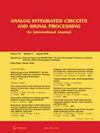Grey wolf optimization (GWO) based efficient partitioning algorithm VLSI circuits for reducing the interconnections
Abstract
Many earlier partitioning studies used underlying partitioning methods to boost speed. As the problems grew in size and complexity, the partitioning technique application was insufficient to give outstanding results. Recent research has demonstrated the potential of multilevel techniques. A multilevel partitioning mechanism repeatedly divides the event until the size of the event is less than the specified limit, at which point it is un-coarsened using a partitioning refinement algorithm. A multi-faceted optimization problem was solved simultaneously in this study using the grey wolf optimization (GWO) technique. This work's methodology is based on information exchange and particle mobility inside a search space. In the partitioning phase of VLSI circuit optimization, multi-objective optimization challenges exist at the physical design level. The following sections present the results of multi-objective optimization of cut size delay and use the swarm technique (GWO). The GWO algorithm effectively solves the NP-hard problem, according to the conclusions of this research. Construct a concurrent multi-objective optimization issue and solve it using a programming technique. The circuit netlist files were utilized in the ISCAS’85 circuit benchmark suite to provide information on the circuit. This approach has much promise in VLSI circuit partitioning.


 求助内容:
求助内容: 应助结果提醒方式:
应助结果提醒方式:


